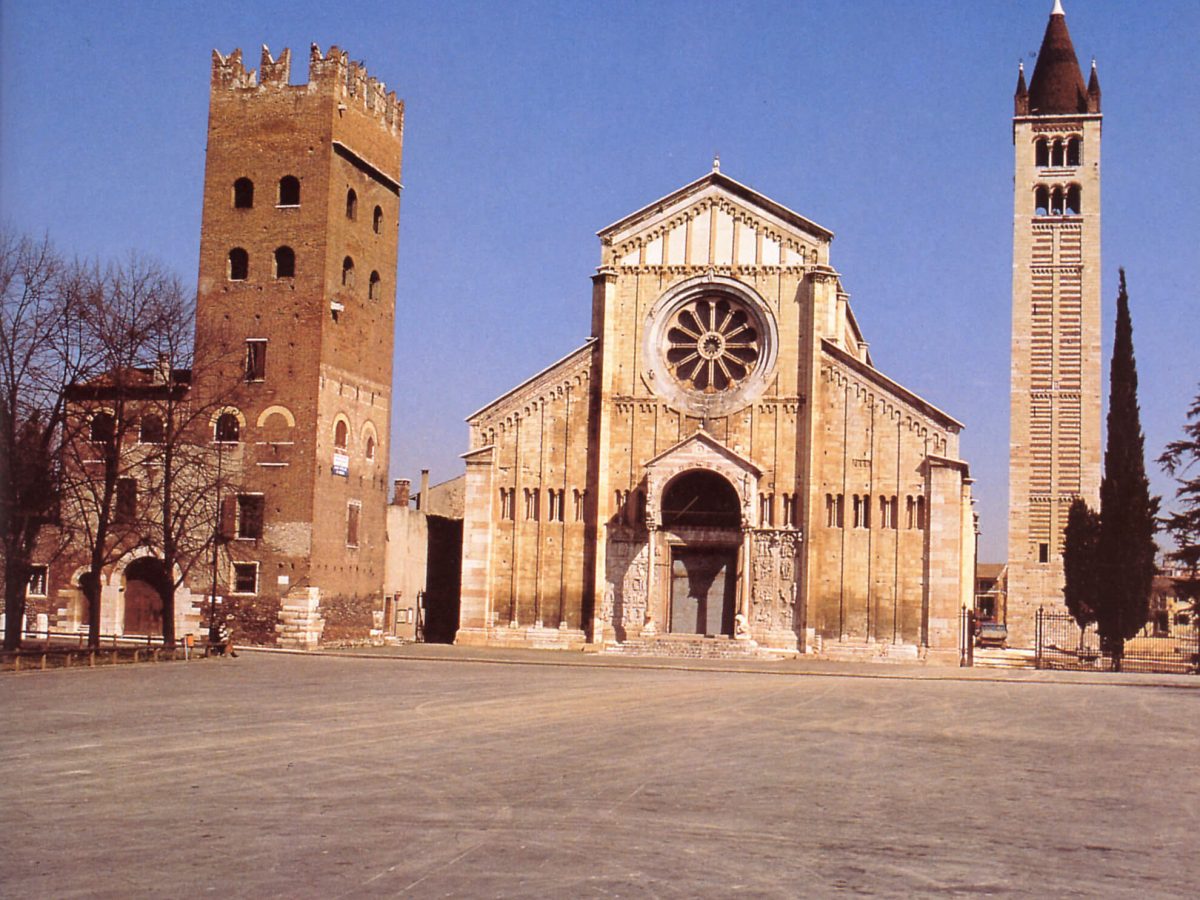The city is situated in northern Italy at the foot of the Lessini Mountains on the River Adige. It dates from prehistoric times: a small built-up area that developed between the 4th and 3rd century BCE became a Roman municipium in the 1st century BCE after which it rose rapidly in importance.
During the 5th century, Verona was occupied by the Ostrogoth Theodoric I, later by the Lombards, and in 774 by Charlemagne. In the early 12th century, it became an independent commune. It prospered under the rule of the Scaliger family and particularly under Cangrande I, falling to Venice in 1405. From 1797, it became part of the Austrian Empire and joined the Kingdom of Italy in 1866.
The core of the city consists of the Roman town nestled in the loop of the river containing one of the richest collections of Roman remains in northern Italy. Surviving remains of this era include the city gate, Porta Borsari, the remains of the Porta Leoni, the Arco dei Gavi, which was dismantled in the Napoleonic period and rebuilt next to Castelvecchio in the 1930s, the Ponte Pietra, the Roman theatre, and the Amphitheatre Arena.
The Scaligers rebuilt the walls during the Middle Ages, embracing a much larger territory in the west and another vast area on the east bank of the river. This remained the size of the city until the 20th century. The heart of Verona is the ensemble consisting of the Piazza delle Erbe (with its picturesque fruit and vegetable market) and the Piazza dei Signori, with historic buildings that include the Palazzo del Comune, Palazzo del Governo, Loggia del Consiglio, Arche Scaligere, and Domus Nova. The Piazza Bra has a number of buildings dating back to different epochs.
Verona’s surviving architecture and urban structure reflects the evolution of this fortified town over its 2,000 year history.


